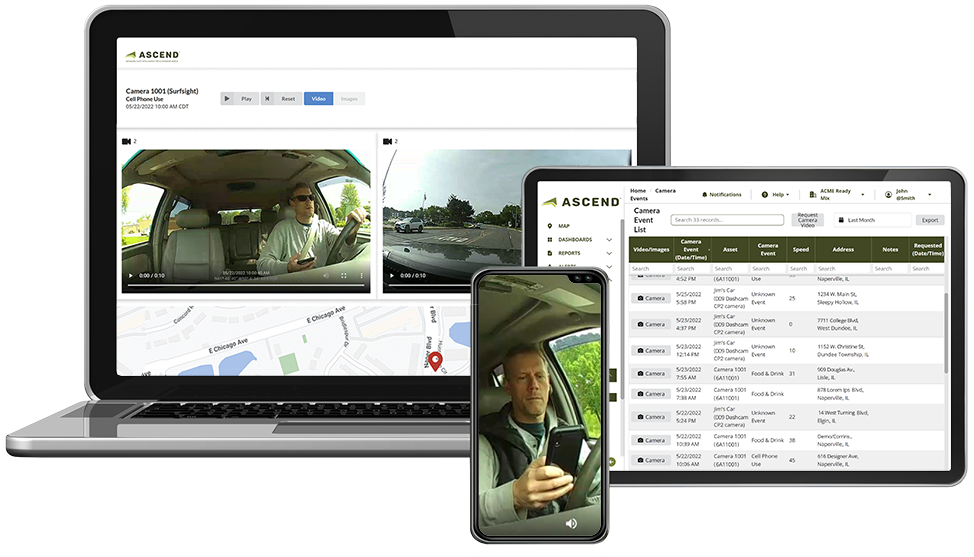Part 2 in a Series About the Importance of Driver Safety.
A telematics system can provide a wealth of valuable data about your fleet – data that can translate into insights and actionable intelligence you can use to make meaningful changes to how you operate your business, whether it’s finding ways to be more efficient, cutting costs, improving asset optimization, or better managing fleet maintenance.
But, in addition to changing how your business operates, a telematics system can also drive positive changes in the behavior of your drivers. This matters a great deal when it comes to safety. You need your drivers to own safety. They need to fully buy into your safety program, make safety their top priority when they are behind the wheel, and drive with an awareness that accidents or moving violations can have personal consequences for themselves in addition to what they might cost the company.
Here are some of the ways that implementing a telematics system can make your drivers more safety conscious.
Reinforce your safety plan. Your safety plan will have multiple components, including driver training, coaching, regular meetings and conversations focused on safety, and more. Through your telematics system, you can gather and share the data needed to reinforce your various safety efforts and initiatives – vehicle speed, safety scores, instances of unsafe behavior – and arm your safety manager with intelligence to make needed changes to the program.
 Assigning and gamifying safety scores. Having identified the most important metrics to gauge driver performance when it comes to safety, you can use relevant telematics data to assign safety scores to each of your drivers. You can then employ gamification by sharing, via the telematics platform app, a stack-ranked scorecard so your drivers can see how they stack up to their peers. The motivation to be at the top of the list, and win a prize, such as a gift card, can keep drivers focused on improving their safety scores. The same psychology also works for those hovering near the bottom of the rankings, as nobody will want to be dead last.
Assigning and gamifying safety scores. Having identified the most important metrics to gauge driver performance when it comes to safety, you can use relevant telematics data to assign safety scores to each of your drivers. You can then employ gamification by sharing, via the telematics platform app, a stack-ranked scorecard so your drivers can see how they stack up to their peers. The motivation to be at the top of the list, and win a prize, such as a gift card, can keep drivers focused on improving their safety scores. The same psychology also works for those hovering near the bottom of the rankings, as nobody will want to be dead last.
Monitoring their activities behind the wheel. Dashcams allow you to check in on your drivers’ activities behind the wheel, and they also can make a big impact when it comes to safety. According to the National Surface Transportation Safety Center for Excellence, dashcams, when combined with driver coaching, reduce safety-related events by 52%. These safety improvements can be a powerful way to demonstrate the ROI of your telematics system, as some companies we have worked with have discovered.
 But the power of dashcams isn’t just in what you can see. It also lies with drivers’ knowledge that they are being monitored and are then more likely to avoid engaging in dangerous behaviors, such as speeding or looking at their cell phones.
But the power of dashcams isn’t just in what you can see. It also lies with drivers’ knowledge that they are being monitored and are then more likely to avoid engaging in dangerous behaviors, such as speeding or looking at their cell phones.
Real-time alerts and corrections. Dashcams, many of which now feature AI functionality, can detect and even predict dangerous driver behavior before it results in an accident and send signals to drivers to make them aware that what they are doing is unsafe and to correct their behavior. While, ideally, drivers won’t become over-reliant on these technology-enabled nudges, they can help make them more aware of their behavior and encourage them to be as safe as possible.
The Right Combination
So, is safe driving about telematics or is it about drivers taking responsibility for safety? The best answer is that if you have the right telematics system in place and drivers who are invested in your safety program, you will have an unbeatable combination.

